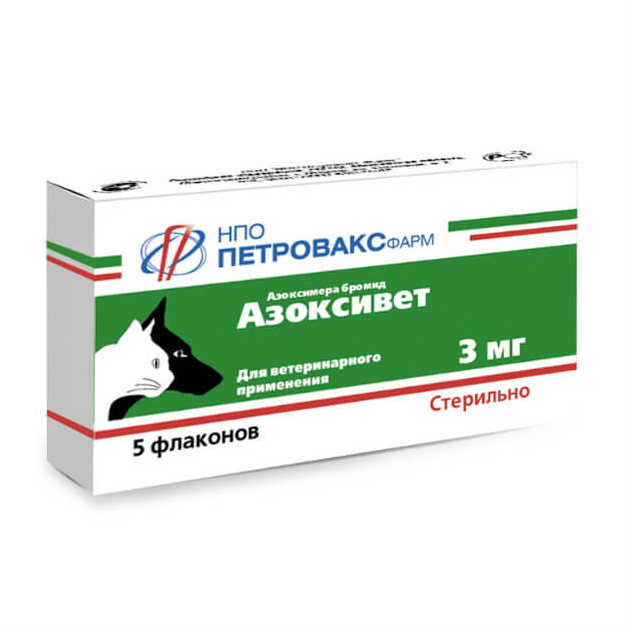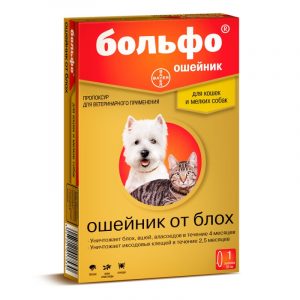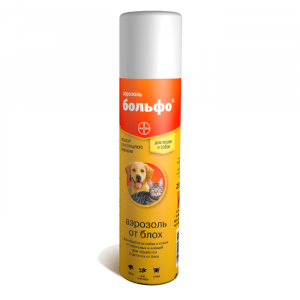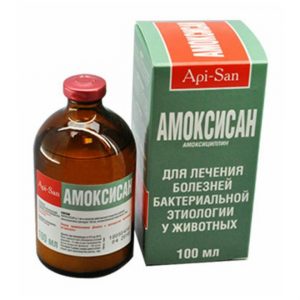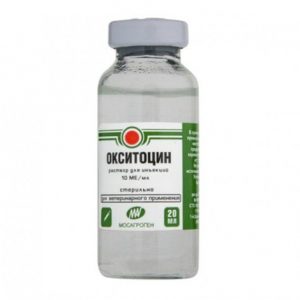Description
Pharmacological action
Azoxivet belongs to the pharmacotherapeutic group of immunomodulatory agents.
Azoximera bromide, which is part of Azoxivet, has a wide spectrum of biological activity, increases the body’s resistance to bacterial, fungal and viral infections, stimulates the humoral immune response, the cooperation of T and B lymphocytes, the phagocytic activity of macrophages, increases the resistance of erythrocyte membranes, activates factors innate immunity. It helps to restore immune responses in secondary immunodeficiency conditions caused by infections of various etiologies, injuries, burns, malignant neoplasms, complications after surgery or the use of chemotherapeutic agents, including cytostatics, steroid hormones.
Along with the immunomodulatory effect, Azoxivet has a pronounced detoxification and antioxidant activity, which is determined by the structure and high molecular nature of the components of the drug. Increases the resistance of cell membranes to the cytotoxic effect of drugs and chemicals, reduces their toxicity.
After administration, the drug is well absorbed and rapidly distributed to all organs and tissues of the body. With the introduction of various types of animals, the half-life is 50-65 hours. Bioavailability with the parenteral route of administration – 90-100%, with oral – more than 70%.
Azoxivet crosses the blood-brain and blood-brain barrier. The following organs have increased sorption ability to the drug: eyes, liver, kidneys, heart, lungs, spleen, pancreas. There is no tissue cumulation of the drug. Azoxivet does not inhibit the isoenzymes of CYP1A2, CYP2C9, CYP2C19, CYP2D6 of cytochrome P-450.
In the body, Azoxivet undergoes biodegradation to low molecular weight oligomers, excreted mainly by the kidneys, with feces – not more than 3%.
Azoxivet by its degree of exposure to the body belongs to low-hazard substances (hazard class 4 according to GOST 12.1.007-76), in the recommended doses it does not have sensitizing, embryotoxic, teratogenic, mutagenic and carcinogenic effects.
Indications
Azoxivet is used by animals of various types and ages for the correction of immunity as mono-and complex therapy of acute and chronic infectious diseases of bacterial, viral or fungal etiology in case of poisoning, acute allergic and toxic-allergic conditions during and after chemo- and radiation therapy of tumors to reduce the nephro- and hepatotoxic effects of drugs in order to prevent complications in the postoperative period in order to increase resistance to adverse environmental factors.
The use of azoxivet in complex therapy can increase the effectiveness and reduce the duration of treatment, significantly reduce the use of antibiotics, glucocorticosteroids, and extend the period of remission.
Contraindications
Contraindication to use is the increased individual sensitivity of the animal to the components of the drug, it is used with caution in animals with kidney pathology.
Special instructions
Azoxivet is not used simultaneously with other immunomodulatory drugs and biostimulants.
Products of animal origin obtained from animals during the period of use of the drug Azoxivet can be used without restrictions.
Personal preventive measures
When working with Azoxivet, the general rules of personal hygiene and safety precautions provided for when working with medicines should be observed.
People with hypersensitivity to the drug should avoid direct contact with Azoxivet. When working with the drug, it is forbidden to drink, smoke and eat food. Wash hands with soap and water after working with the drug. It is forbidden to use empty bottles from under a medicinal product for domestic purposes, they must be disposed of with household waste.
If the product gets on the skin or mucous membranes, immediately rinse them with plenty of tap water. In case of allergic reactions or in case of accidental ingestion of a drug into the human body, you should immediately contact a medical institution (you should have the instructions for use or a label with you).
Composition
Azoxivet contains 1.5 mg or 3 mg of bromide as an active ingredient in azoximer, and mannitol, povidone, betacarotene and water as excipients (in an amount not exceeding 30% of the total dry matter content) for injection.
Dosage and administration of
Azoxivet is used by agricultural and domestic animals, as well as by poultry depending on the diagnosis, clinical course and severity of the disease: – parenterally (intramuscularly, subcutaneously, intravenously) in compliance with aseptic and antiseptic rules with a course of 5-7 injections once a day, every other day or 1-2 times a week
– orally (for drinking) once a day before feeding.
For agricultural and domestic animals for treatment and prophylaxis, the drug is prescribed depending on the weight in the following doses (for the active substance): – for animals weighing up to 3.0 kg – 0.3-0.5 mg / kg
– for animals weighing up to 10 kg – 0.3 mg / kg
– for animals weighing from 10 to 100 kg – 0.25-0.20 mg / kg
– for animals weighing more than 100 kg – 0.15-0, 1 mg / kg
Poultry for therapeutic purposes at a dose of 0.5 mg / kg of poultry mass.
Poultry for preventive purposes – 0.3 mg / kg poultry mass.
In order to increase the nonspecific resistance of the body to adverse environmental factors (weaning, regrouping, transportation, change of diet) and the prevention of diseases, Azoxivet is prescribed to animals 2-3 days before the proposed event 5-7 times with an interval of 24 hours.
For the prevention of complications in the postoperative period, Azoxivet is prescribed to animals once a day 2-3 days before the proposed operation, and starting from the second day of the postoperative period – 4 times with an interval of 48 hours.
In the period after chemo- and radiation therapy of tumors, a 2-3-month course of treatment is carried out using the drug 1-2 times a week.
If necessary (depending on the severity of the disease), the course of administration of the drug can be increased to 20-30 injections with the introduction of 1-2 times a week.
Animals with kidney pathology Azoxivet is prescribed no more than 2 times a week at a dose of 0.05-0.1 mg / kg.
Azoxivet is used in a group poultry with water for drinking in the morning before feeding for 5-7 days: for therapeutic purposes in a dose of the active substance – 0.5 mg / kg poultry weight, for prophylactic purposes – 0.3 mg / kg weight birds.
Symptoms of overdose in animals have not been identified.
Peculiarities of the action of the drug during the first administration (administration) or its withdrawal were not revealed.
No adverse effects of the drug were detected when used in pregnant, lactating and newborn animals.
If you miss a single dose of the drug, you should continue taking (introducing) the drug in the prescribed dosages and dosage regimen.
The use of the drug Azoxivet does not exclude the use of other specific and symptomatic therapy medications. Azoxivet can be administered intravenously in conjunction with sodium chloride in an isotonic 0.9% solution.
Azoxivet is compatible with antibiotics, antiviral, antifungal and antihistamines, glucocorticosteroids, cytostatics and sulfonamides.
Side effects
When using the drug Azoxivet in accordance with these instructions, side effects and complications, as a rule, are not observed.
With increased individual sensitivity of the animal to the components of the drug, the use of the drug is stopped and desensitizing therapy is carried out.
Storage conditions
In the manufacturer’s sealed packaging, in a dry, cool place, protected from direct sunlight and inaccessible to children and animals, separately from food and feed at a temperature of 2 ° C to 8 ° C.
Expiration date
2 years from the date of production. The shelf life of the drug after the first opening of the bottle or ampoule for oral administration is 48 hours, provided that it is stored at a temperature of 2 ° C to 8 ° C for parenteral administration – not subject to storage.
Active ingredient
Azoximer bromide
Dosage Form
injection solution
